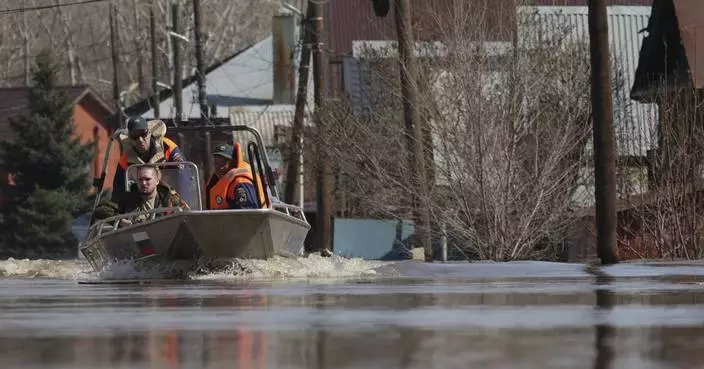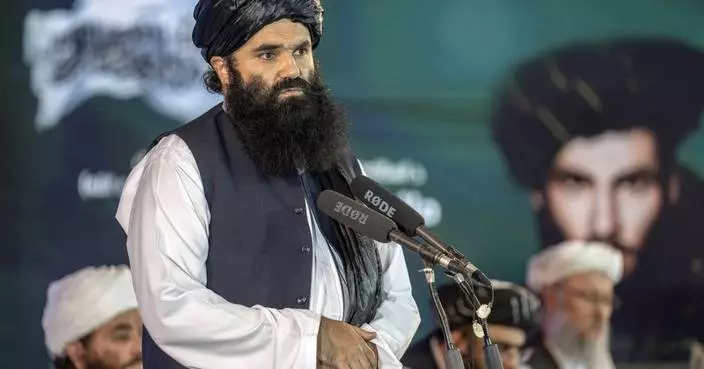The Taliban unleashed a wave of attacks across Afghanistan on Tuesday, targeting police compounds and government facilities with suicide bombers in the country's south, east and west, and killing at least 74 people, officials said.
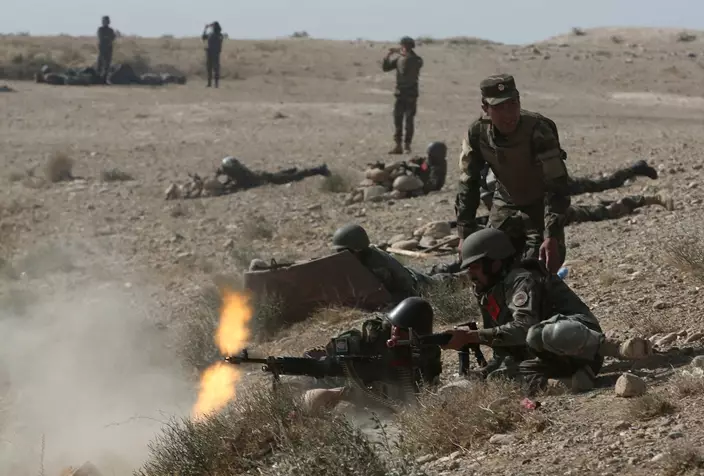
Afghan National Amy commandos open fire during a military exercise in Kabul, Afghanistan, Tuesday, Oct. 17, 2017. (AP Photo/Massoud Hossaini)
Among those killed in one of the attacks was a provincial police chief. Scores were also wounded, both policemen and civilians.
Afghanistan's deputy interior minister, Murad Ali Murad, called the onslaught the "biggest terrorist attack this year."
Murad told a press conference in Kabul that attacks in Ghazni and Paktia provinces killed 71 people.
In southern Paktia province, 41 people — 21 policemen and 20 civilians — were killed when the Taliban targeted a police compound in the provincial capital of Gardez with two suicide car bombs. Among the wounded were 48 policemen and 110 civilians.
The provincial police chief, Toryalai Abdyani, was killed in the Paktia attack, Murad said.
The Interior Ministry said in a statement earlier Tuesday that after the two cars blew up in Gardez, five attackers with suicide belts tried to storm the compound but were killed by Afghan security forces.
Health Ministry spokesman Waheed Majroo said the Gardez city hospital reported receiving at least 130 wounded in the attack.
Hamza Aqmhal, a student at the Paktia University, told The Associated Press that he heard a very powerful blast that shattered glass and broke all the windows at the building he was in. The university is about 2 kilometers (1.25 miles) from the training academy, said Aqmhal, who was slightly injured by the glass.
A lawmaker from Paktia, Mujeeb Rahman Chamkani, said that along with the provincial police chief, several of his staff were killed. Most of the casualties were civilians who had come to the center, which also serves a government passport department, Chamkani said.
In southern Ghazni province, the insurgents stormed a security compound in Andar district, using a suicide car bomb and killing 25 police and five civilians, Murad said. At least 15 people were wounded, including 10 policemen, he added.
Arif Noori, spokesman for the provincial governor in Ghazni, said the Taliban attack there lasted nine hours. By the time the attackers were repelled, there were 13 bodies of Taliban fighters on the ground, Noori added.
And in western Farah province, police chief Abdul Maruf Fulad says the Taliban attacked a government compound in Shibkho district, killing three policemen.
The Taliban claimed responsibility for all three attacks.
Despite the staggering numbers, Murad said Afghan forces are confident in their "readiness to fight terrorists and eliminate them from Afghanistan." He said the Taliban have suffered heavy defeats over the past six months at the hands of Afghan forces and were seeking revenge.
Later on Tuesday, an Afghan official said drone strikes killed 35 Taliban fighters in the country's east, near the border with Pakistan.
Abdullah Asrat, spokesman for the governor of Paktia province, said drones fired missiles at four locations in Anzarki Kandaw, killing the insurgents and wounding 15 others. He said a commander of the Pakistani Taliban, Abu Bakr, and other senior insurgents were among the dead. He did not provide further details.
Chamkani, the lawmaker from Paktia, said the drones struck as the Taliban were collecting the bodies of 20 militants killed in a strike Monday on a militant base near the border.
Pakistani intelligence officials say Monday's drone strike hit a militant compound on the Pakistani side of the border, but Pakistan's army later denied any such strike on its territory. It was not immediately possible to reconcile the two accounts.
WASHINGTON (AP) — The suicide bombing at the Kabul airport that killed U.S. troops and Afghans in August 2021 was not preventable, and the “bald man in black” spotted by U.S. service members the morning of the attack was not the bomber, according to a new review by U.S. Central Command.
The findings, released Monday, refute assertions by some service members who believed they had a chance to take out the would-be bomber but did not get approval. And, for the first time, the U.S. military is confirming that the bomber was Abdul Rahman al-Logari, an Islamic State militant who had been in an Afghan prison but was released by the Taliban as the group took control of the country that summer.
The Abbey Gate bombing during the final chaotic days of the Afghanistan withdrawal killed 13 U.S. service members and 170 Afghans, and wounded scores more. It triggered widespread debate and congressional criticism, fueled by emotional testimony from a Marine injured in the blast, who said snipers believe they saw the possible bomber but couldn't get approval to take him out.
Former Marine Sgt. Tyler Vargas-Andrews told the House Foreign Affairs Committee last March that Marines and others aiding in the evacuation were given descriptions of men believed to be plotting an attack. Vargas-Andrews, who was injured in the blast but not interviewed in the initial investigation, said he and others saw a man matching the description and might have been able to stop the attack, but requests to take action were denied.
In a detailed briefing to a small number of reporters, members of the team that did the review released photos of the bald man identified by military snipers as a potential threat and compared it with photos of al-Logari. The team members, who spoke to reporters on condition of anonymity to provide details not yet made public, described facial recognition and other analysis they used that they said confirmed those were not the same man.
“For the past two years, some service members have claimed that they had the bomber in their sights and they could have prevented the attack. We now know that is not correct,” said a team member.
They said they also showed the photo of the bald man to service members during the latest interviews, and that the troops again confirmed that was the suspicious man they had targeted.
The review notes that the bald man was first seen around 7 a.m. and that troops lost sight of him by 10 a.m. The bombing was more than seven hours later, and the U.S. says al-Logari didn't get to Abbey Gate until “very shortly” before the blast took place. They declined to be more specific about the timing, saying details are classified.
Family members of those killed in the blast received similar briefings over the past two weekends and some are still unconvinced.
“For me, personally, we are still not clear. I believe Tyler saw what Tyler saw and he knows what he saw. And it was not the guy that they were claiming was the man in black,” Jim McCollum, the father of Marine Lance Cpl. Rylee McCollum, told The Associated Press.
He said the team went into “pretty good detail, not trying to discredit Tyler, but effectively saying he was wrong. However, that ended up being as clear as mud to us.”
And Mark Schmitz, the father of Marine Lance Cpl. Jared Schmitz, questioned the photo itself.
“They kept saying this is who Tyler Vargas-Andrews was looking at and we were thinking to ourselves, ‘well, that’s interesting. Why is this a picture of a picture from a Canon camera?’” he said. “To me it felt like they were trying to find the guy in those cameras that may have come close to looking like somebody of interest that they can try to sell to us.”
The families, however, also said they were relieved to get more details about their loved ones' deaths, saying the initial briefings were not as good.
Schmitz said that Army Gen. Eric Kurilla, head of U.S. Central Command, was part of the latest briefing and apologized for how the families were treated during the initial probe. This time around officials were able to share with Schmitz for the first time exactly where his son was when the bomb went off and that he was unconscious almost immediately, and therefore did not feel the impact of the shrapnel that went through his left torso, hitting a primary artery.
“That to me was, first and foremost, the best news I could have gotten,” Schmitz said. “That gave me a little bit of closure that my son didn’t suffer, which made me feel really good.”
Team members said they also are planning to speak with the troops who were interviewed this time, to share the results of the report.
They said the review also could not completely rule out claims that militants did a test run of the bombing several days earlier. But after reviewing photos and other intelligence, the team concluded it was unlikely that three men seen carrying a large bag — which troops deemed suspicious — were doing a trial run.
More broadly, the team said the review brought some new details to light, including more discussion about the possible bombing test run. But they said overall it confirmed the findings of U.S. Central Command's initial investigation into the bombing: that it was not preventable and that reports of threats prior to the bombing were too vague.
As an example, the new review noted that threat reports talked about a possible bomber with groomed hair, wearing loose clothes, and carrying a black bag. That description, the review said, could have matched anyone in the enormous crowd desperately trying to get into the airport.
The team said they conducted 52 interviews for the review — adding up to a total of 190 when the previous investigation is included. Service members were asked about 64 questions, and the sessions lasted between one hour and seven hours long.
A number of those questioned weren't included in the original investigation, many because they were severely wounded in the attack. The new review was ordered last September by Kurilla, largely due to criticism of the initial investigation and assertions that the deadly assault could have been stopped.
Members of the team said the Islamic State group put out the bomber's name on social media, but U.S. intelligence was later able to independently confirm that report.
U.S. Central Command’s initial investigation concluded in November 2021 that given the worsening security situation at the airport’s Abbey Gate as Afghans became increasingly desperate to flee, “ the attack was not preventable at the tactical level without degrading the mission to maximize the number of evacuees.”
Critics have slammed the Biden administration for the catastrophic evacuation, and they've complained that no one was held accountable for it. And while the U.S. was able to get more than 130,000 civilians out of the country during the panic after the Taliban took control of the government, there were horrifying images of desperate Afghans clinging to military aircraft as they lifted off.
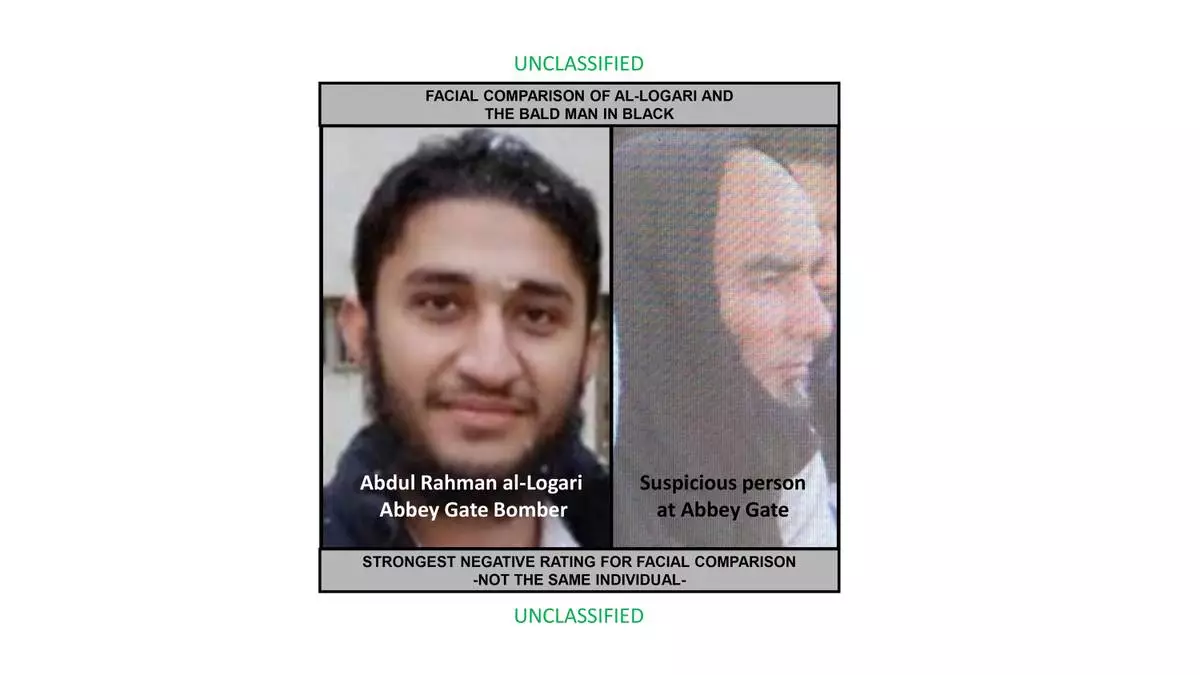
This combination photo shows a an image taken from a sniper team member's camera of the "bald man, in black" right, and a photo of the actual bomber, Islamic State militant Abdul Rahman al-Logari. A review released Monday, April 15, 2024, says the suicide bombing at the Kabul airport that killed U.S. troops and Afghans in August 2021 was not preventable, and the “bald man in black” spotted by U.S. service members the morning of the attack was not the bomber. (U.S. Central Command via AP)
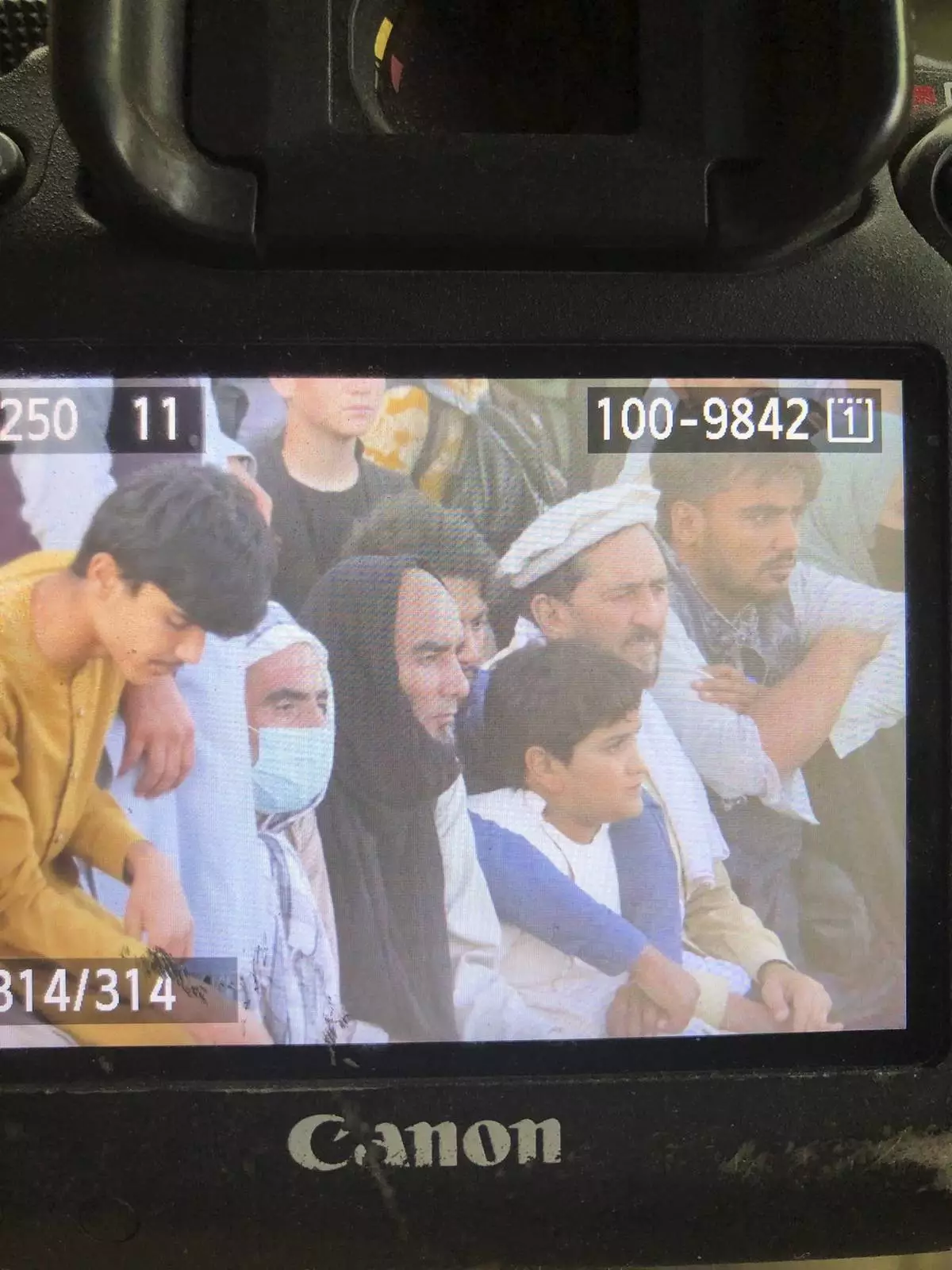
A digital display of a sniper team member's camera on August 26, 2021, shows the "bald man in black" that some service members believed was the would-be bomber. A review released Monday, April 15, 2024, says the suicide bombing at the Kabul airport that killed U.S. troops and Afghans in August 2021 was not preventable, and the “bald man in black” spotted by U.S. service members the morning of the attack was not the bomber. (U.S. Central Command via AP)
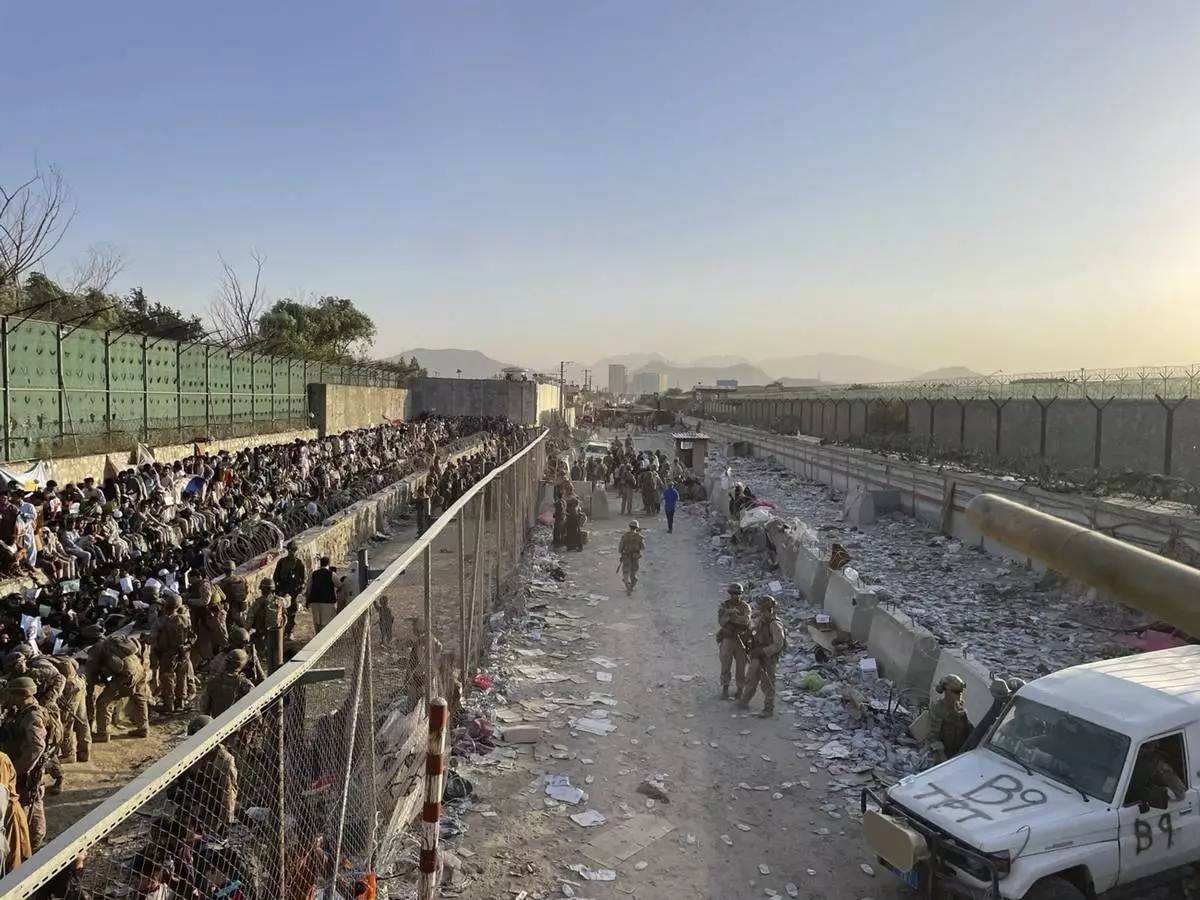
The bombing area at Abbey Gate is pictured August 26, 2021, in Kabul, Afghanistan, before the blast. A review released Monday, April 15, 2024, says the suicide bombing at the Kabul airport that killed U.S. troops and Afghans in August 2021 was not preventable, and the “bald man in black” spotted by U.S. service members the morning of the attack was not the bomber. (U.S. Central Command via AP)







